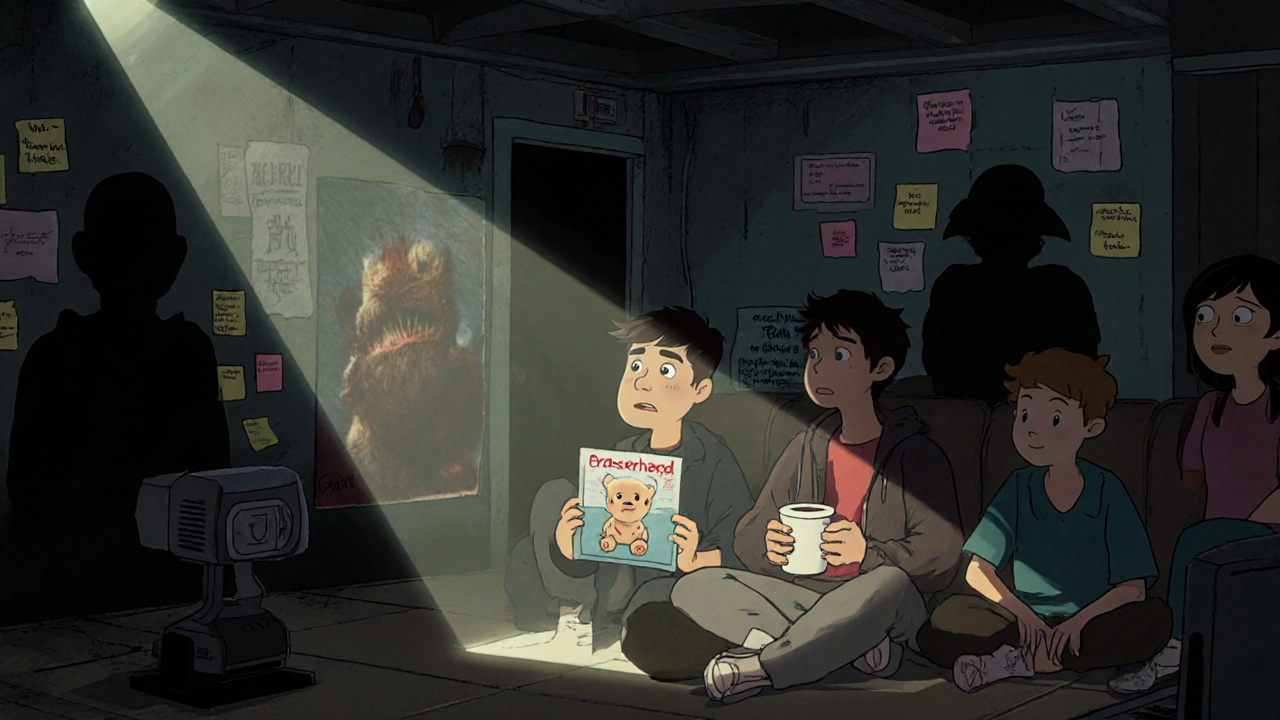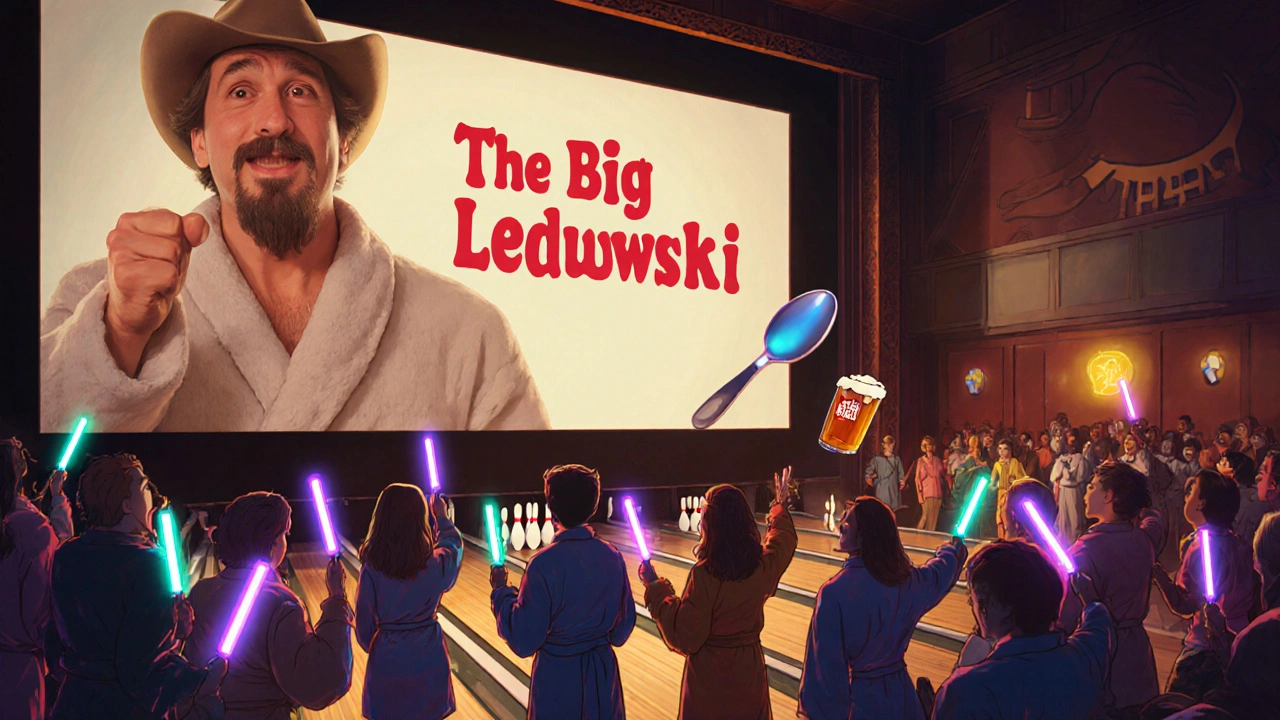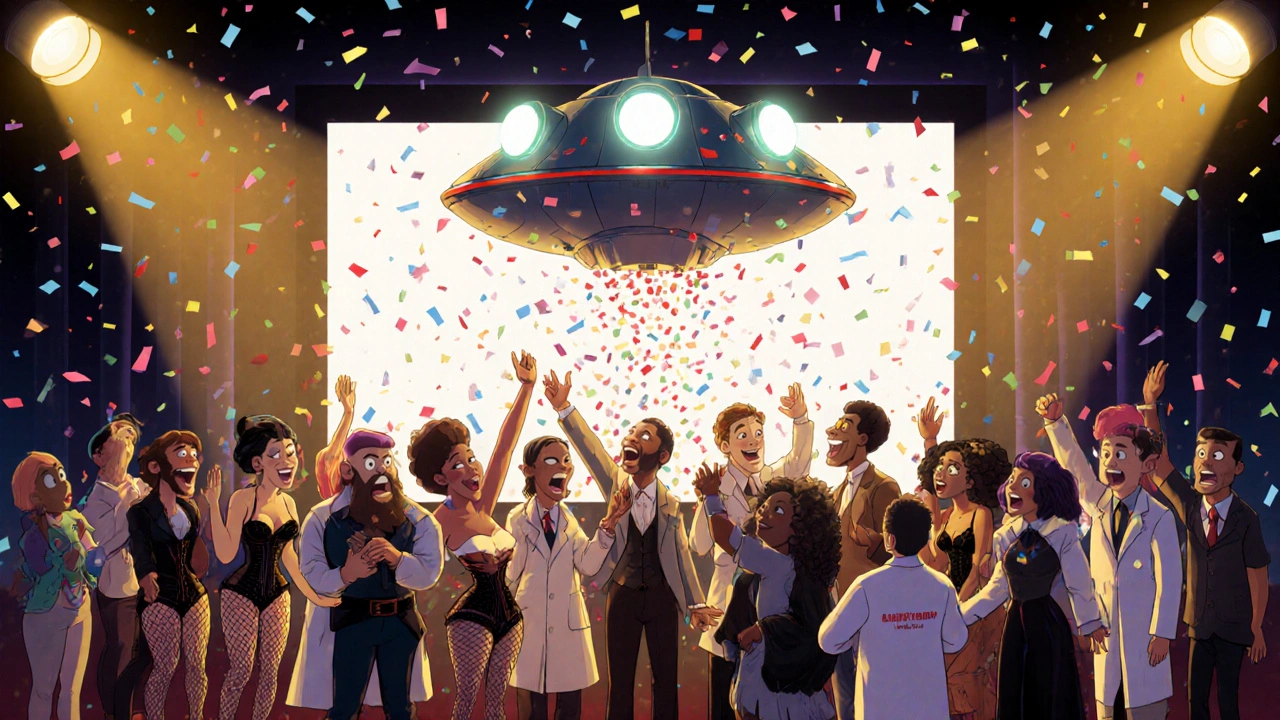Some movies don’t just entertain-they become rituals. People quote them line by line, dress up for midnight screenings, and argue for years over whether they’re good or just gloriously bad. That’s the power of camp and cult cinema. It’s not about what critics say. It’s about what audiences make of it.
What Camp Cinema Really Means
Camp isn’t just flashy costumes or over-the-top acting. It’s a way of seeing the world through irony, exaggeration, and deliberate artifice. Think of camp cinema as the love letter to bad taste-except the people who love it know exactly how bad it is, and that’s the point.
John Waters’ Hairspray (1988) isn’t a musical because it’s polished. It’s a musical because it’s loud, messy, and proud of it. The characters don’t sing to be beautiful-they sing to survive. The makeup is thick, the wigs are taller than the actors, and the dialogue is delivered like a soap opera on helium. That’s camp. It doesn’t pretend to be high art. It waves a giant flag that says, ‘I know this is ridiculous, and that’s why I love it.’
Camp cinema thrives on disconnect. When a film tries too hard to be serious but fails spectacularly, it often becomes camp. The 1975 film The Rocky Horror Picture Show was a box office flop. Critics called it a mess. Audiences turned it into a live theater experience. People throw rice at the screen during the wedding scene. They dress as Dr. Frank-N-Furter. They scream lines back at the actors. It’s not about the plot. It’s about the shared performance.
Cult Films Are Made, Not Born
Not every weird movie becomes a cult classic. Most vanish into obscurity. What separates a cult film from a forgotten B-movie is community. A cult film doesn’t just exist-it’s kept alive by people who refuse to let it die.
Eraserhead (1977) by David Lynch is slow, strange, and deeply unsettling. No studio wanted it. Critics didn’t get it. But college students in the 1980s started screening it in basements, dorm rooms, and underground theaters. They brought friends. They bought posters. They debated what the baby really was. Over time, it stopped being a movie. It became a shared secret.
Cult films often have one thing in common: they’re misunderstood by mainstream audiences. That’s why they survive. They’re the movies that get passed hand-to-hand like forbidden zines. Donnie Darko (2001) flopped in theaters. Five years later, it was playing in 300 theaters nationwide. Why? Because someone showed it to a friend, who showed it to another, who wrote a blog post, who started a forum. The internet didn’t make it popular-it made it personal.

The Role of Irony in Taste
People don’t watch Plan 9 from Outer Space because they think it’s good. They watch it because it’s the perfect storm of bad acting, terrible special effects, and a plot that makes no sense. And yet, there’s something beautiful in its failure.
Irony is the engine of camp. It’s not about laughing at the movie. It’s about laughing with it. The audience becomes co-creators. When a character says something absurd, the crowd shouts the line louder than the actor. When the spaceship looks like a plastic bowl glued to a broomstick, the audience cheers. That’s not mockery-it’s celebration.
Studies in cultural sociology show that people who identify with camp cinema often do so because they feel excluded from mainstream culture. Camp gives them a language. A way to say, ‘I don’t fit in here, but I’ve found my people over here.’ It’s not about rejecting good taste-it’s about building a new one.
Take the 1992 film The Room. Directed by Tommy Wiseau, it’s been called the worst movie ever made. The acting is wooden. The dialogue is nonsensical. The plot drifts like a boat with no oars. But in 2003, a group of friends in Los Angeles started showing it on Friday nights. They brought spoons. They threw balls. They shouted at the screen. Today, it’s sold out in theaters across the U.S. and Europe. People pay $25 to sit in a dark room and yell at a movie that’s objectively terrible. Why? Because for two hours, they’re not alone.
Community as the Real Artifact
The movie isn’t the point. The community is.
Cult and camp cinema aren’t about the film on the screen. They’re about the people in the seats. The rituals matter more than the plot. The costumes matter more than the script. The chants matter more than the dialogue.
At a The Big Lebowski screening, fans wear bathrobes, drink White Russians, and bowl on the floor. At a Speed Racer midnight show, people wear neon onesies and wave glow sticks. These aren’t random quirks. They’re rites of passage. They’re how people say, ‘This is mine. This is ours.’
These communities don’t need critics. They don’t need awards. They don’t need box office numbers. They need each other. And that’s why these films outlive their creators, their studios, and their original audiences.

Why Camp Survives in the Age of Streaming
Streaming platforms want you to watch something once, rate it, and move on. Algorithms push you to the next thing. But camp and cult cinema refuse to be consumed. They demand participation.
When you stream Clue (1985) on Netflix, you get the movie. When you watch it at a theater with 200 people dressed as Colonel Mustard and Miss Scarlet, you get something else. You get a live reenactment. You get laughter that echoes. You get a shared memory.
Even in 2025, when every movie is available instantly, cult screenings are growing. Independent theaters in Austin, Portland, and Brooklyn report record attendance for midnight cult showings. TikTok has revived interest in obscure 80s horror films. Fans create edits, remix soundtracks, and write fan fiction that outlasts the original.
Camp cinema isn’t dying. It’s evolving. The internet didn’t kill it-it gave it wings. Now, a kid in Manila can watch Re-Animator (1985), post a meme of the headless zombie, and connect with someone in Toronto who’s been attending the same midnight show for 15 years.
The Secret to Camp’s Longevity
Camp cinema doesn’t ask you to take it seriously. It asks you to take it personally.
It’s not about the director’s vision. It’s about your experience. It’s not about technical perfection. It’s about emotional resonance-even if that emotion is confusion, delight, or disbelief.
That’s why camp lasts. Because it’s not a genre. It’s a relationship. Between the film, the audience, and the ritual they build together.
Next time you find yourself watching a movie that’s ‘so bad it’s good,’ don’t laugh it off. Ask yourself: Who else is watching this? Who else knows the lines? Who else showed up in costume? That’s not a movie. That’s a community.
What’s the difference between camp and cult cinema?
Camp refers to an aesthetic style-exaggerated, ironic, theatrical-that can appear in any film. Cult cinema refers to movies that develop a devoted fanbase over time, often through repeated viewings and communal rituals. A film can be campy without being a cult classic, and a cult film can be serious (like Eraserhead) without being camp. But when camp and cult come together-like in The Rocky Horror Picture Show-they create something unforgettable.
Can a modern movie become a cult classic?
Absolutely. Donnie Darko, Scott Pilgrim vs. the World, and Everything Everywhere All at Once all started as under-the-radar releases. What made them cult hits wasn’t the budget or the marketing-it was word-of-mouth. Fans shared them, quoted them, dressed up for them, and turned them into events. Modern movies can become cult classics if they connect deeply with a niche audience and encourage participation.
Why do people love movies that are technically bad?
Because ‘bad’ in this context isn’t about quality-it’s about authenticity. These films often feel more human. They’re messy, sincere, and unpolished. When a movie tries too hard to be perfect, it can feel cold. When it fails spectacularly, it feels alive. People don’t just watch these films-they join them. The flaws become part of the charm.
Is camp just a form of mockery?
No. Mockery implies looking down. Camp is about looking sideways-with affection. It’s not about laughing at the film-it’s about laughing with it, celebrating its excess, and finding beauty in its imperfections. Many camp fans have deep emotional ties to these films. They’re not jokes-they’re touchstones.
Do you need to be part of a group to appreciate camp cinema?
Not at all. You can love Turkey Shoot or Attack of the 50 Foot Woman alone in your living room. But camp truly comes alive in community. The shared rituals-yelling lines, throwing props, dressing up-are what turn a movie into a movement. Alone, it’s a film. Together, it’s a tradition.
If you’ve ever stayed up past midnight to watch a movie that everyone else thinks is awful-you already know what camp is. You don’t need a degree in film theory. You just need a group of people who get it.

